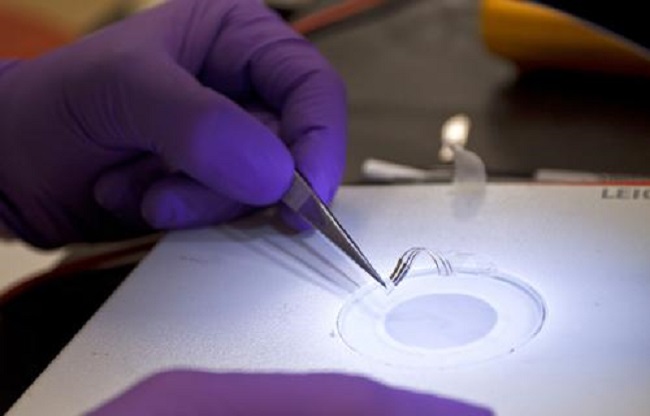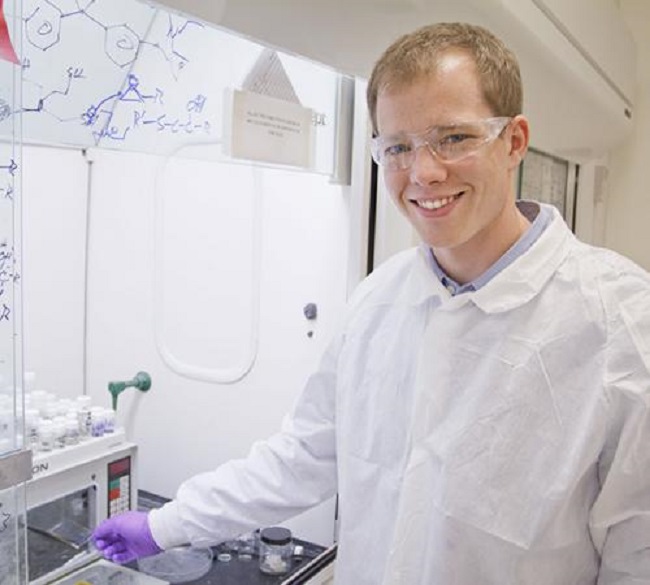The latest research into biologically adaptive transistors brings us one step closer to true cybernetics, not that dollar store “I’m a cyborg because I have a pacemaker” nonsense, but cybernetics in the sense of merging electronics and flesh. Scientists from the University of Texas at Dallas and the University of Tokyo have created biologically adaptive and flexible electronic devices that soften when implanted within the body and can attach to tissue, nerves, and blood vessels.
 The transistors change shape when heat ed.
The transistors change shape when heat ed.
“You need the device to be stiff at room temperature so the surgeon can implant the device, but soft and flexible enough to wrap around 3D objects so the body can behave exactly as it would without the device. By putting electronics on shape-changing and softening polymers, we can do just that,” said Dr. Walter Voit, assistant professor of materials science and engineering and mechanical engineering and one of the authors of the research. The research is being published in the upcoming issue of Advanced materials and is among the first demonstrations of a shape-changing transistor capable of retaining electronic properties.
How was the cyber transistor created?
Prior attempts at embedding electronics beneath the skin yielded stiff and awkward-looking results, incompatible with the softness of biological tissue; In contrast, Voit’s shape memory polymers permit the creation of electronics that remain stiff while the surgery is underway, before softening once they are fully embedded. Closing the cybernetic loop between the body’s organic composition and electronics’ synthetic makeup will one day grant doctors greater insight into what’s happening inside the body and allow remote body-part stimulation for treatment.

Jonathan Reeder, one of the co-authors of the paper.
The electronic devices were built using layers of thin, flexible electronic foil and an organic semiconductor, as well as an adapted technique usually applied in the creation cost-reducing silicon electronics. “We used a new technique in our field to essentially laminate and cure the shape memory polymers on top of the transistors,” stated Voit. He further explains that his group’s device design approaches the size and stiffness of precision biological structures, but has ways to go before it can match nature’s complexity, function, and organization.
Testing results
Voit and his team successfully tested the device on a living specimen by implanting a cylinder-shaped object 2.25 millimeter in diameter within the flesh of rats. Once the object came into contact with their body temperature, it began to morph with the living tissue. Examining the ensuing electronic proved its properties were retained. Co-author of the research paper, Jonathan Reeder, revealed that now that a working base has been established, the next step in the research is to shrink device so they can wrap around smaller objects and add sensory components.
Via Phys.org
Advertisement
Learn more about Electronic Products Magazine





